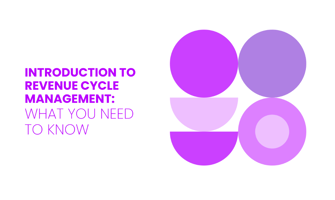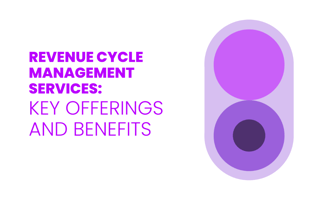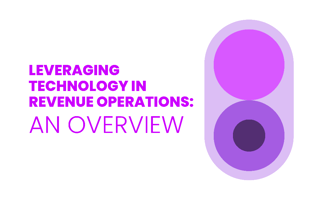Revenue Cycle Management (RCM) is the process of tracking and managing financial interactions from...
Revenue Management and RevOps Defined
The history of revenue management can be traced back to the 1980s, originating in the airline industry. To optimize financial results, airlines began introducing a dynamic pricing concept. Businesses like American Airlines successfully applied price discrimination techniques and anticipated consumer demand. Airlines and hospitality businesses as well as telco companies have been on top of this challenge for decades, but the approach is now scaling in B2B companies.
Leading companies are restructuring their organizations to address the app bloat that is happening across marketing and sales, and the new operational force needed to tame it. This movement is called RevOps.
Revenue Operations (RevOps) stands for change in management practices and processes, roles and responsibilities, data and technologies. The change concerns how companies organise for sales, marketing and customer success (CS) in order to maximise productivity and impact of their activities.
RevOps recognizes that revenue isn’t just an outcome but rather a full process that involves the strategic convergence of sales, marketing and customer success (CS). It’s the end-to-end process of driving revenue, from the moment a prospect considers a purchase (marketing) to when you close the deal (sales) to their renewal and upsell (CS). The result of this orchestration is faster growth and more profit. The full view to Revenue management include Up-sales, Cross-sales, New Customer Hunting and Retention. Pricing is also an important factor as well as growing the average deal value.
the IMPACT of revenue operations
In BCG's "Revving up Go-To-Market Operation in B2B" and the results from early adopters led by software as a service (SaaS) providers, they reported substantial benefits, including:
- 100% to 200% increases in digital marketing ROI
- 10% to 20% increases in sales productivity
- 10% increases in lead acceptance
- 15% to 20% increases in internal customer satisfaction
- 30% reductions in GTM expenses
PRODUCTIVITY FROM DATA AND TECHNOLOGY
RevOps is a function that brings sales, marketing, and customer success teams together. Instead of each team having its own tools and processes, RevOps technology creates a unified approach. This removes silos and creates shared responsibility over revenue. Shared data and unity also support a more agile operating model (e.g. OKR - Objectives and Key Results-based management and measurement) that brings the responsibilities closer to the customers and increases autonomy of functions, as well as natural synergies between them. This improves employee satisfaction and gives people stronger feeling of understanding and control of their own success.
When different operational units operate with the same data and shared KPIs, the alignment is much easier and more natural.
According to a Gartner report, it’s predicted that 60% of the B2B companies will have deployed consolidation of tech stack and most of them adopt a RevOps model by 2025. Moreover, the title of ‘Head of RevOps’ is the fastest-growing job title in the US for 2023.
RevOps is more than just a hot new trend – it’s the future of B2B marketing and sales.
OUR APPROACH - A BRIDGE BETWEEN STRATEGY AND OPERATIONS
Majority of RevOps technologies approach this challenge with pipeline optimisation and leverage integration with CRM technologies. Companies like Gong, Clari and Zoom Info have such an approach. Naturally, the major players like Salesforce, MS Dynamics and Hubspot have a strong stake in this game of sales enablement.
At 180ops, we have a different approach. We connect with billing data, which is about actual changes in revenue and value of customer lifetime collaboration. Our approach is a combination of internal data and external data related to firmographics. We don't just use AI and ML tools to analyze existing customers, but also mirror the possibilities to hunting targets. The minimum data - maximum value approach delivers:
- The current and potential value of the market by size and standard industry classification (Addressable market)
- Upsales, cross-sales, new customer hunting opportunities (ARPA and Penetration growth)
- A projection for billing by offering and customers (Light Forecast)
- Risk projection (offering level likelihood of defect)
- Readiness projection (offering level likelihood of buying, obtainable market)
All of this information can be viewed easily in an Ansoff matrix, or you can look deeper at an individual customer level, too:
.png?width=692&height=444&name=Screenshot%20(65).png)
Our approach is more profound in the sense that the foundation of the insights is the reality of customers and market changes, but the use of data can be approached by roles and responsibilities. This approach gives tools for strategic planning and overall management with data-driven customer and market centricity.
Through this, we help companies create a bridge between strategy, planning, and implementation to operational everyday customer collaboration across functions.
the basis of our advanced modeling
The forces and phenomena related to markets and customers are at the core of our value proposition. In these turbulent times, understanding change and making sense of the complex markets is imperative. This is why the more advanced modeling is founded on extended dataset about three primary sources of data:
- Customer collaboration (RFIs, reclamations, support requests, use of services, refunds),
- Changes in target companies (turnover, profitability, credit rating, personnel, and variety of other signals), and
- Markets in general (Interest rates, energy prices, employment, GDP, confidence, and dozens more)
Each business is unique, which means that the data recipe needs to be adjusted by vertical, but the methodology and technology is ready to be deployed and capable of serving companies individual needs.
The availability of data is no longer the challenge; making sense of it is
The technology side is also not a problem anymore, because taking advantage of this type of intelligence is not an ICT project. Prepare to be astonished and have your perspective and perception changed - to see what others can't.




